Washing your hands properly, particularly during current times, is incredibly important. One of the biggest defence methods against bacteria and viruses is making sure we wash our hand on a regularly basis – it has never been so pivotal. Today is World Hand Hygiene day and the World Health Organisation global campaign SAVE LIVES: Clean Your Hands global campaign aims to maintain global promotion, visibility and sustainability of hand hygiene in health care and to ‘bring people together’ in support of hand hygiene improvement around the world.
You’d be surprised by how easily germs collect on our hands when we encounter people, surfaces, and objects throughout the day. You may spread these germs to others or infect yourself by touching your eyes, nose, or mouth. While keeping your hands germ-free all the time is impossible, washing them often will help limit the spread of bacteria, viruses, and other microbes.
Always wash your hands before doing any of the following:
- Preparing food or eating
- Treating wounds or caring for a sick individual
- Putting on or taking off contact lenses
Always wash your hands after doing the following:
- Preparing food
- Using the bathroom
- Touching an animal, animal feed, or animal waste
- Blowing your nose, coughing, or sneezing
- Treating wounds or caring for a sick individual
- Handling rubbish
Hand washing has a lot of benefits when it comes to avoiding disease and adopting a regular habit of washing hands routinely will help you protect your health in a big way. Ideally, hands should be washed with soap and water whenever possible. Antibacterial soaps sold over the counter are no more effective than normal soap at destroying germs, any type of soap is effective when used properly.
Here are the best steps to take when washing your hands:
- Make sure you start by wetting your hands with clean running water.
- Apply soap to cover all surfaces on both hands and wrists.
- Spread the soap around your hands to create a lather (make sure to focus on all surfaces of your hands, fingertips, fingernails and wrists)
- Scrub your hands and wrists for 20 seconds at least.
- Rinse your hands and wrists under clean running water.
- Dry your hands under a hand dryer until all water as evaporated.
Drying your hands using a hand dryer is one of the most effective ways of making sure all water and bacteria are diminished. Here at Airdri, when using a hand dryer, we suggest that you keep your hands under until they are entirely dry, this should be for at least 15 seconds. This amount of time is generally accepted as an industry norm for thoroughly drying hands; however, the length of time required varies depending on the type of hand dryer used. To achieve the same degree of dryness, at least two paper towels are needed on average.
The main reason why hands need to completely dry after washing is because germs can be transferred much more easily to and from wet hands and surfaces. A previous study found up to forty per cent of people do not follow the recommended hand-washing procedures. However, given the level of education and current knowledge around proper handwashing practise amid the pandemic, this statistic is questionable.
Throughout the pandemic, washing our hands thoroughly and regularly has never been more important and the ritual of making sure we wash our hands thoroughly has been at the forefront of our awareness over the past year. Learning from this pandemic and continuing to wash our hands properly in the future will hopefully minimise the chances of a similar pandemic occurring again.


